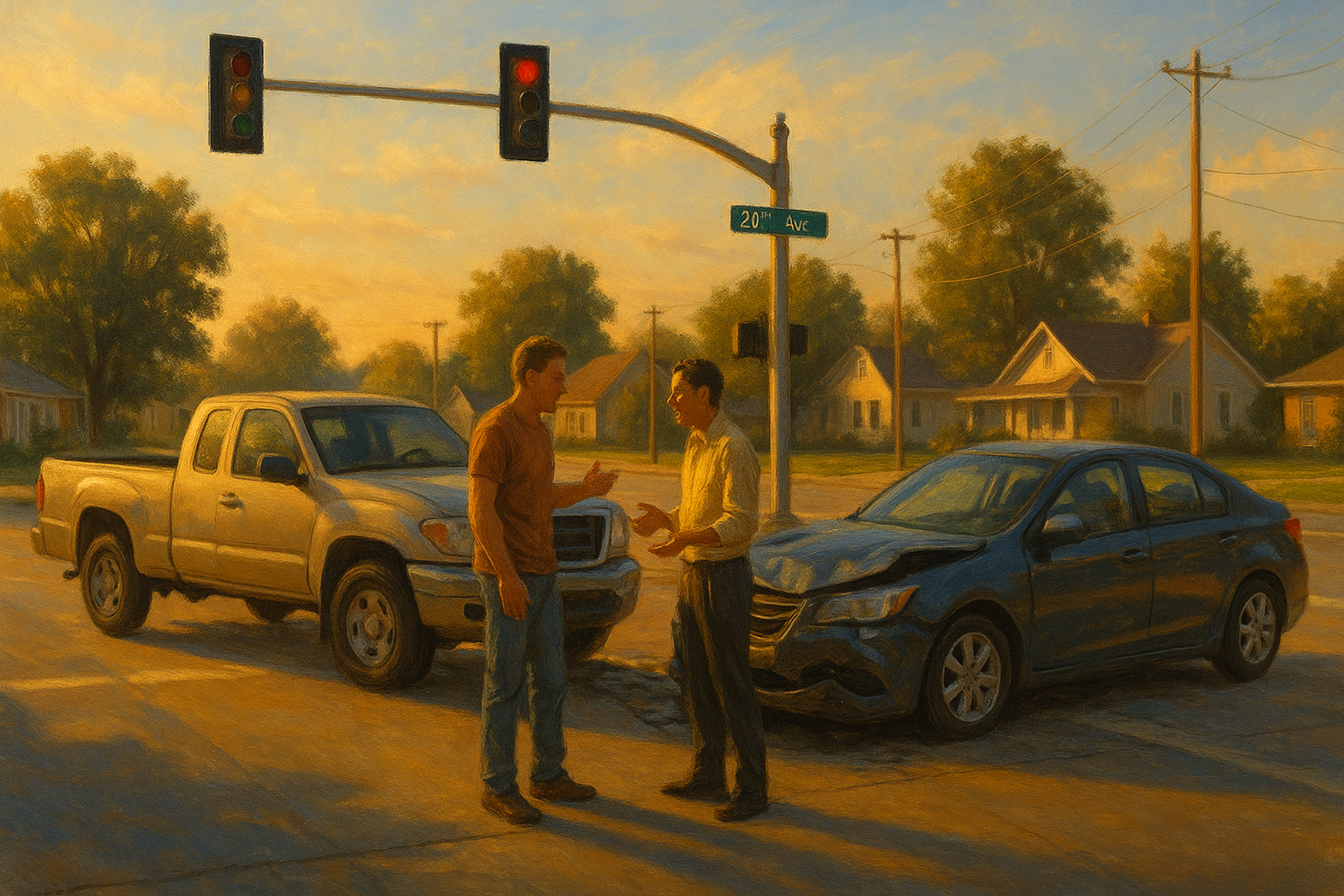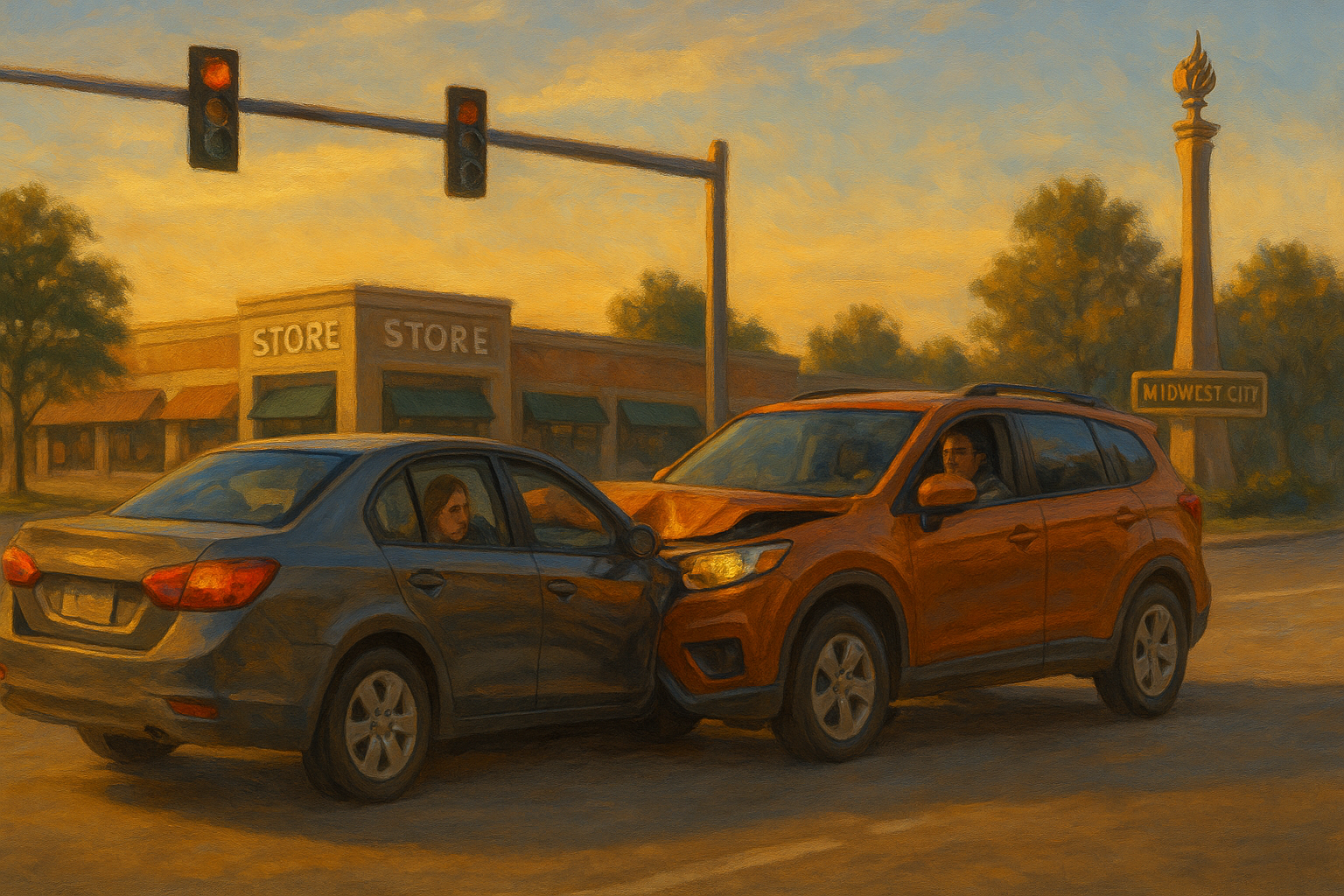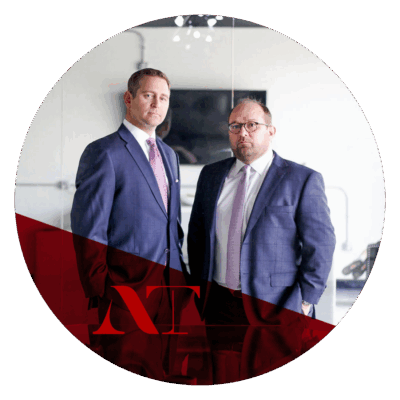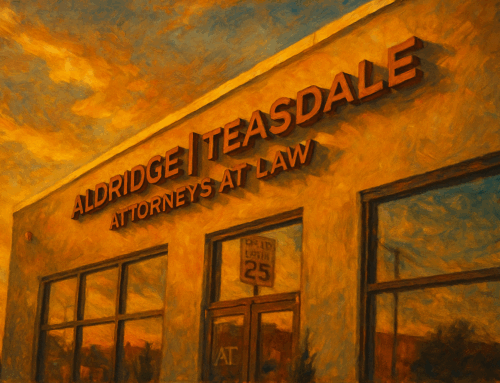After an accident, many injured people worry they can’t file a claim because they were “partially at fault.” The truth is, Oklahoma law recognizes that accidents are rarely black-and-white — and you may still be entitled to compensation even if you made a mistake.
This concept is called comparative fault, and understanding how it works can make a huge difference in the outcome of your injury case. At Aldridge Teasdale, we walk clients through these rules every day to help them avoid traps set by insurance companies.
What Is Comparative Fault?
Oklahoma uses a system called modified comparative negligence. This means:
- You can recover money for your injuries as long as you were not more than 50% at fault.
- Your compensation is reduced by your percentage of fault.
In other words, being partially responsible doesn’t automatically ruin your case — unless your share of fault is 51% or more.
How Comparative Fault Works in Real Life
Here’s a common example:
You were rear-ended in Midwest City, but your brake lights were dim. If a jury decides you were:
- 10% at fault
- And your damages totaled $30,000
You could still recover 90% of your damages, or $27,000.
This is why you should never assume you have “no case.” Fault is rarely as simple as the insurance company makes it sound.
Insurance Companies Use Comparative Fault Against You
Oklahoma insurers know the comparative fault rule — and they use it against accident victims by:
- Claiming you “weren’t paying attention”
- Arguing you “should have seen the hazard”
- Overstating your role in the accident
- Recording your statements and twisting your words
- Trying to push you over the 50% threshold so they can deny the claim entirely
This is why talking to an adjuster before speaking with a lawyer is risky.
How Comparative Fault Applies in Common Injury Cases
Car Wrecks
Insurance companies may blame you for:
- Driving too fast for conditions
- Braking suddenly
- Not checking blind spots
- Not wearing a seatbelt
Even in rear-end or T-bone crashes, adjusters often try to shift partial fault toward the injured driver.
Slip and Fall Cases
Businesses frequently argue that victims:
- “Should have seen” the hazard
- Were looking at their phone
- Weren’t watching where they were walking
- Ignored warning signs

Video evidence, maintenance logs, and witness statements can quickly defeat these claims.
Truck Accidents
In crashes involving commercial vehicles, trucking companies often try to blame the passenger vehicle for:
- Driving in a blind spot
- Cutting off the truck
- Stopping too quickly
- Speeding
But because these companies have more rules to follow, they frequently carry a larger share of fault.
Why Having a Lawyer Matters Under Comparative Fault
Your percentage of fault determines whether you get compensation — and how much. Even a small shift in fault can change your outcome dramatically. That’s why our team:
- Investigates the accident thoroughly
- Preserves video and photographic evidence
- Interviews witnesses
- Pushes back against insurance company tactics
- Builds a case that minimizes or eliminates your fault
When your financial future is on the line, you need a legal team that understands how to use the comparative fault rules in your favor.
Get a Free Case Review — Even If You Think You Were Partially at Fault
If you’re worried about being blamed for your accident, don’t make assumptions. Let an experienced injury lawyer look at the facts and give you honest guidance. You may still have a strong case.
Request your Free Case Review or call (405) 447-HURT. You pay nothing unless we win.
Internal Links:
Personal Injury Overview |
Car Wreck Overview |
Slip and Fall Overview






